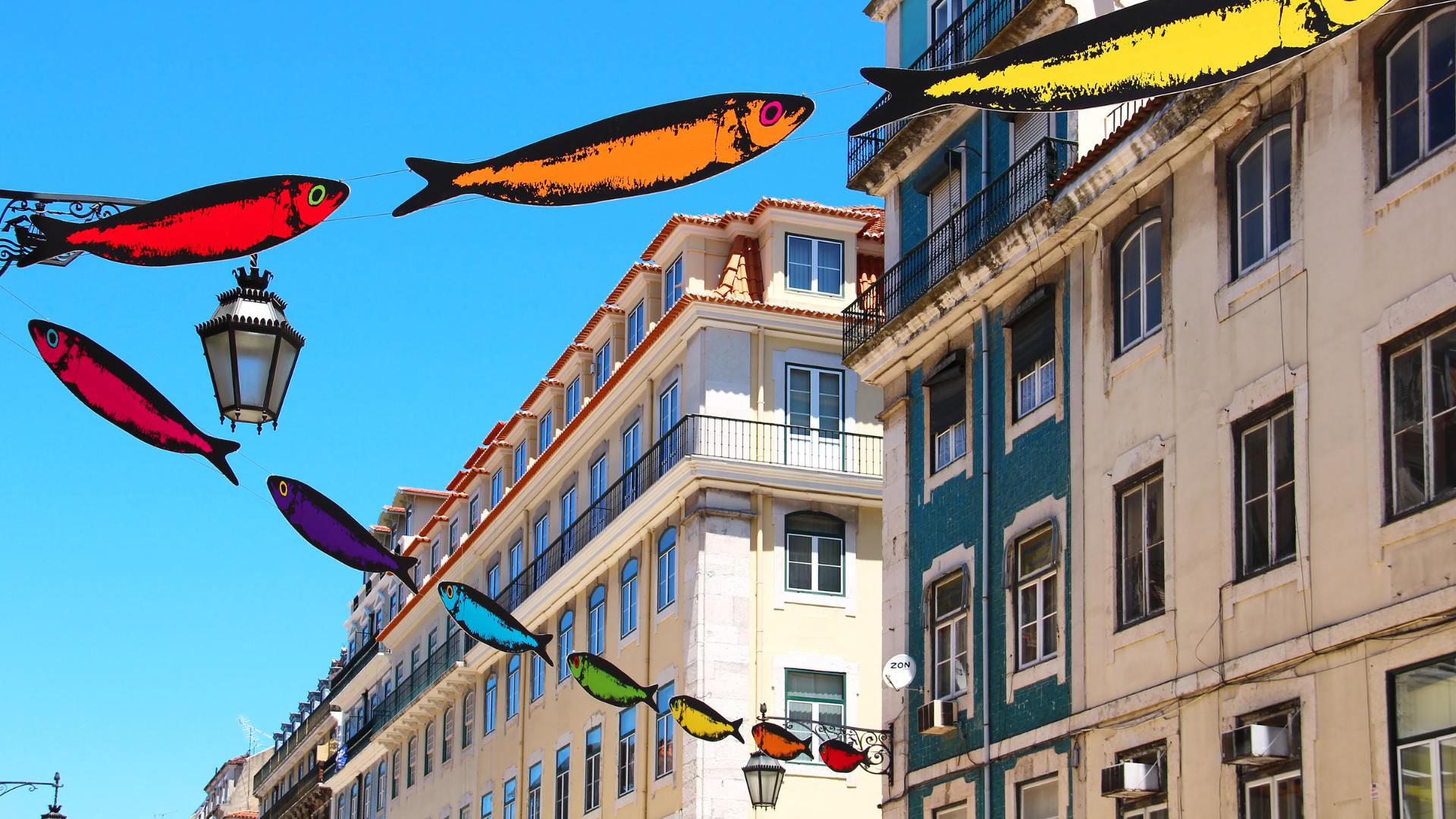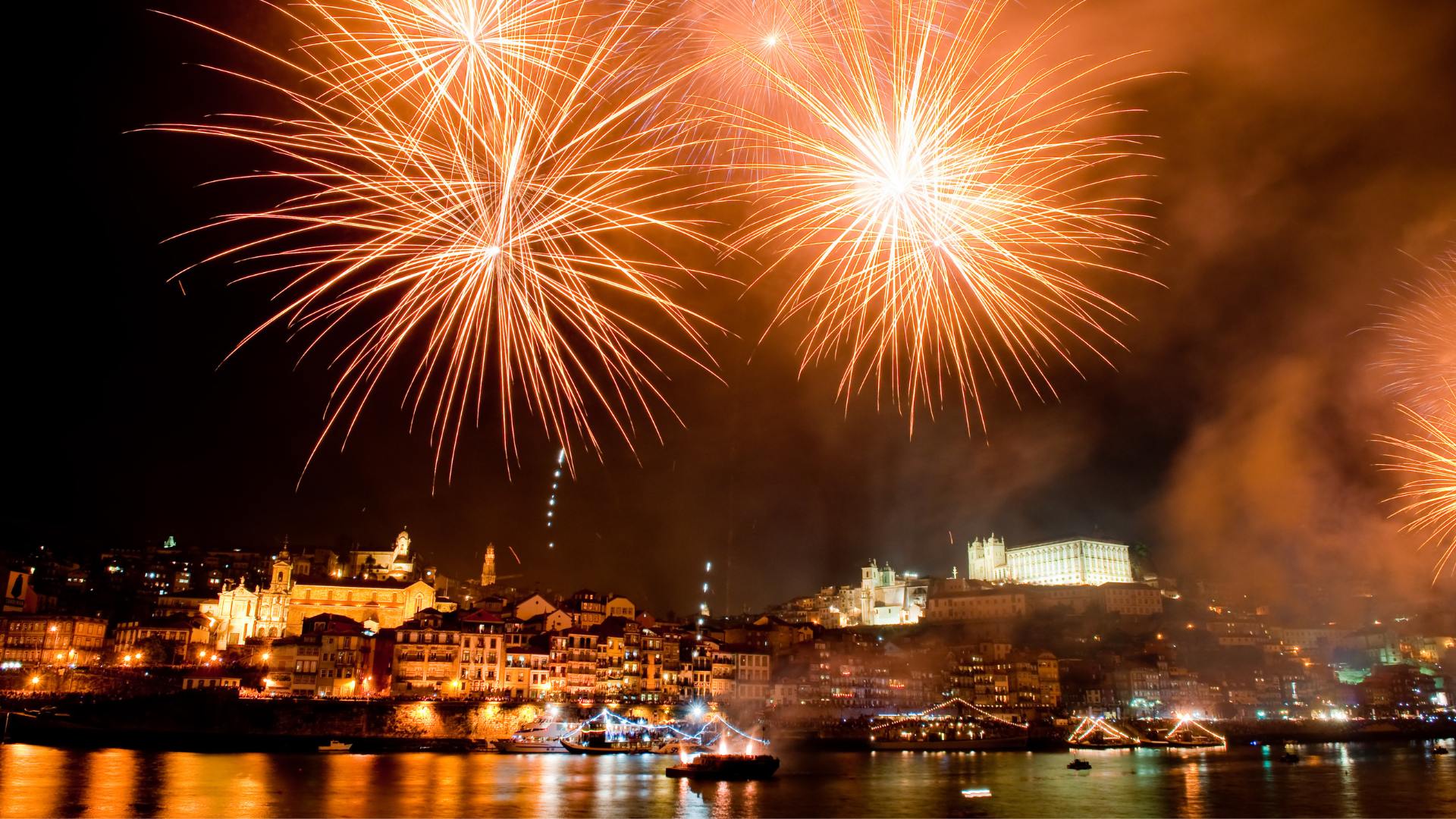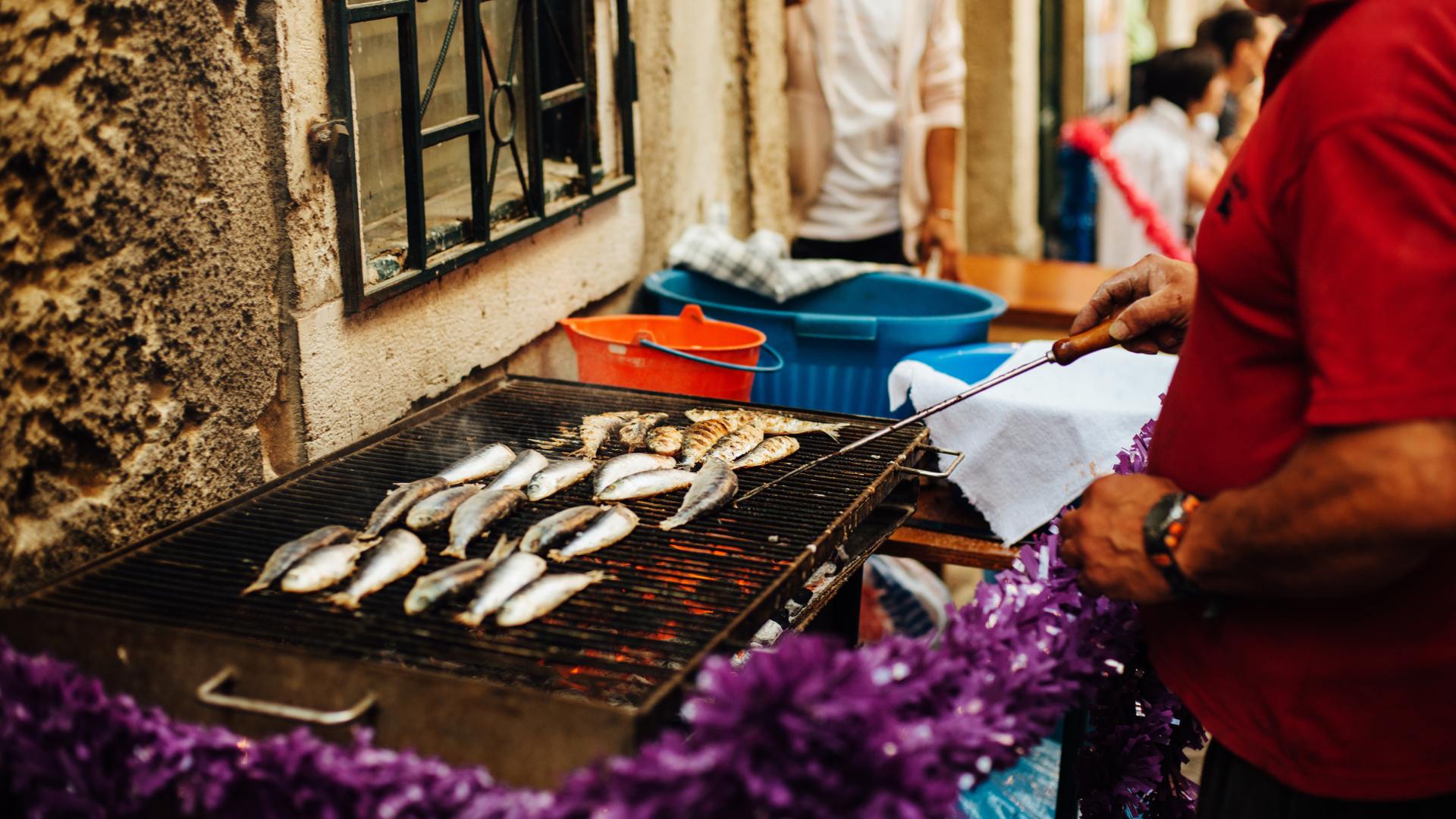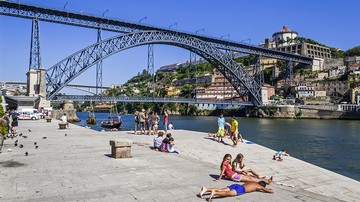
What to do in Portugal / Travel tips
Popular Saints in Portugal
June is the month of St. Anthony and St. John
Popular Saints in Portugal
With a history that dates back to the celebrations of the summer solstice, when communities would gather around the bonfires, we return to the present where the bonfires are still lit, but now they're grilling sardines. There are balloons in the air, small-leaf basil vases, plastic hammers, among other decorations with vivid colours. There's only popular music on the stages that are set up all over the place and meals are enjoyed outdoors. Seated or standing, taste a grilled sardine on a slice of bread, the Portuguese green broth, corn bread or bifanas (pork fillet sandwiches), with an ice-cold Portuguese beer. The smoke that comes from the grill fills the air and emits a pleasant scent. This is June and this is how we celebrate the tradition of our popular saints in Portugal.
St. Anthony is celebrated on the night of 12 to 13 June, in Lisbon.
Very early on, the decorations start adorning the streets, both restaurants and assembled stalls begin setting up their tables and chairs in outdoor areas, and the stages, where the popular music concerts will take place, are put up. They'll be the centre of the upcoming celebrations.
On 12 June we start with the popular marches that go from Avenida da Liberdade to Rossio. This is one of the highlights of the festivities and consists of a parade with several groups from the Lisbon's most traditional districts competing with the most sublime traditional customs, choreographies and songs (every year, there is a winner). It's possible to watch the show from benches assembled specifically for this purpose. Simultaneously, but not only, the party has also started in other equally traditional districts, such as Alfama, Graça, Bica, Mouraria or Madragoa.
The rest of the night is marked by the interaction experienced in the streets, the typical gastronomy and a lot of dancing. On 13 June, the procession of St. Anthony takes place, which starts at the church near the Cathedral, in the Alfama district (where he was born), and passes through the city blessing the poor and underprivileged. As he is known to be a matchmaker, on that same day, the St. Anthony Weddings also take place.
St. John is celebrated on the night of 23 to 24 June, in Porto.
We now head north, just in time for the 23 June, ''the longest day of the year'', according to the locals.
In Porto, the celebrations are different, but just as colourful and lively. You can watch and try it out for yourself by using a leek flower to hit someone on the head, which is more traditional, or hitting someone with a plastic hammer, which is a more current custom. But you can't (or you shouldn't) resent it. If you don't want to risk it, it's best not to go out onto the street and stay inside watching from a balcony with privileged views of all the action.
The most traditional districts are Miragaia, Fontainhas and Ribeira, but there is partying all over the city, where, much like in Lisbon, it's possible to see where the festivities will be taking place from the assembled stages, the improvised tables and chairs on the streets and anywhere you see a grill.
The party, also filled with sardines on bread, cold beer and popular music, peaks at midnight by the river with the fantastic fireworks on the bridge. If you're brave enough, head over to the river bank, as close as possible to the D. Luís I bridge, on the Porto side or on the Vila Nova de Gaia side. The crowds push the weakest aside and can bring anyone to a standstill in a traffic of people until dawn. When the clock strikes midnight, the traditional St. John's balloons are released into the sky, painting it with dots of light and marking this magical night. As they say, during this night there's no sleep, so it only ends at sunrise and with a dip in the sea, as tradition dictates.
The tradition of the small-leaf basil vases
This is also the time for the small-leaf basil vases, which represents the official aromatic plant of the festivity. It can be found everywhere for sale and is mandatory for the decor of the popular festivities.
According to tradition, ''boyfriends'' would gift their ''girlfriends'' a small-leaf basil vase and she would have to care for it until next year's St. Anthony (the matchmaker) festivities, as if it was their relationship. This plant was then called ''lovers herb'' and was always accompanied by a love-themed stanza.
The stanzas are still used nowadays and the particular scent of small-leaf basil still fills the streets during the entire month of June.


















